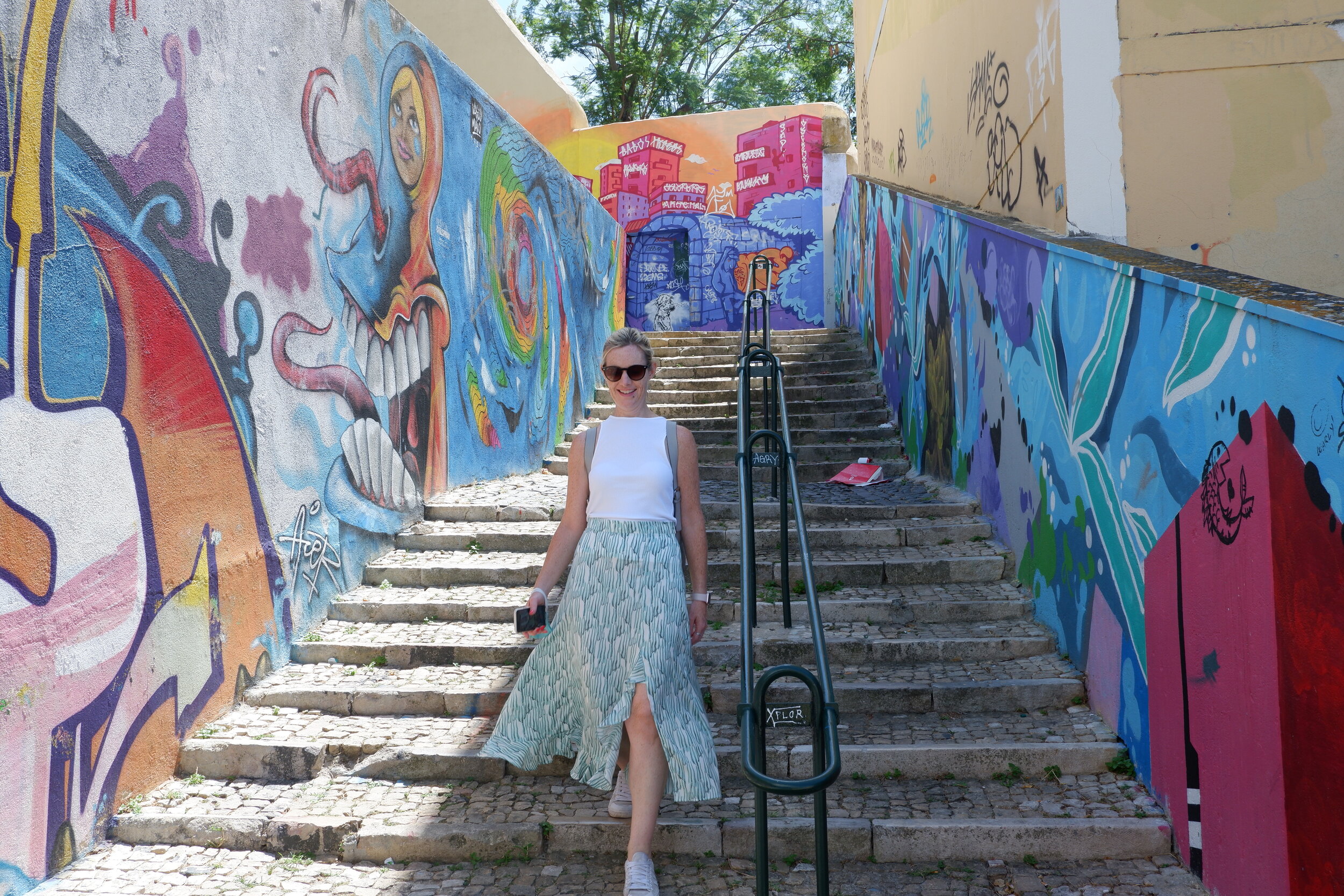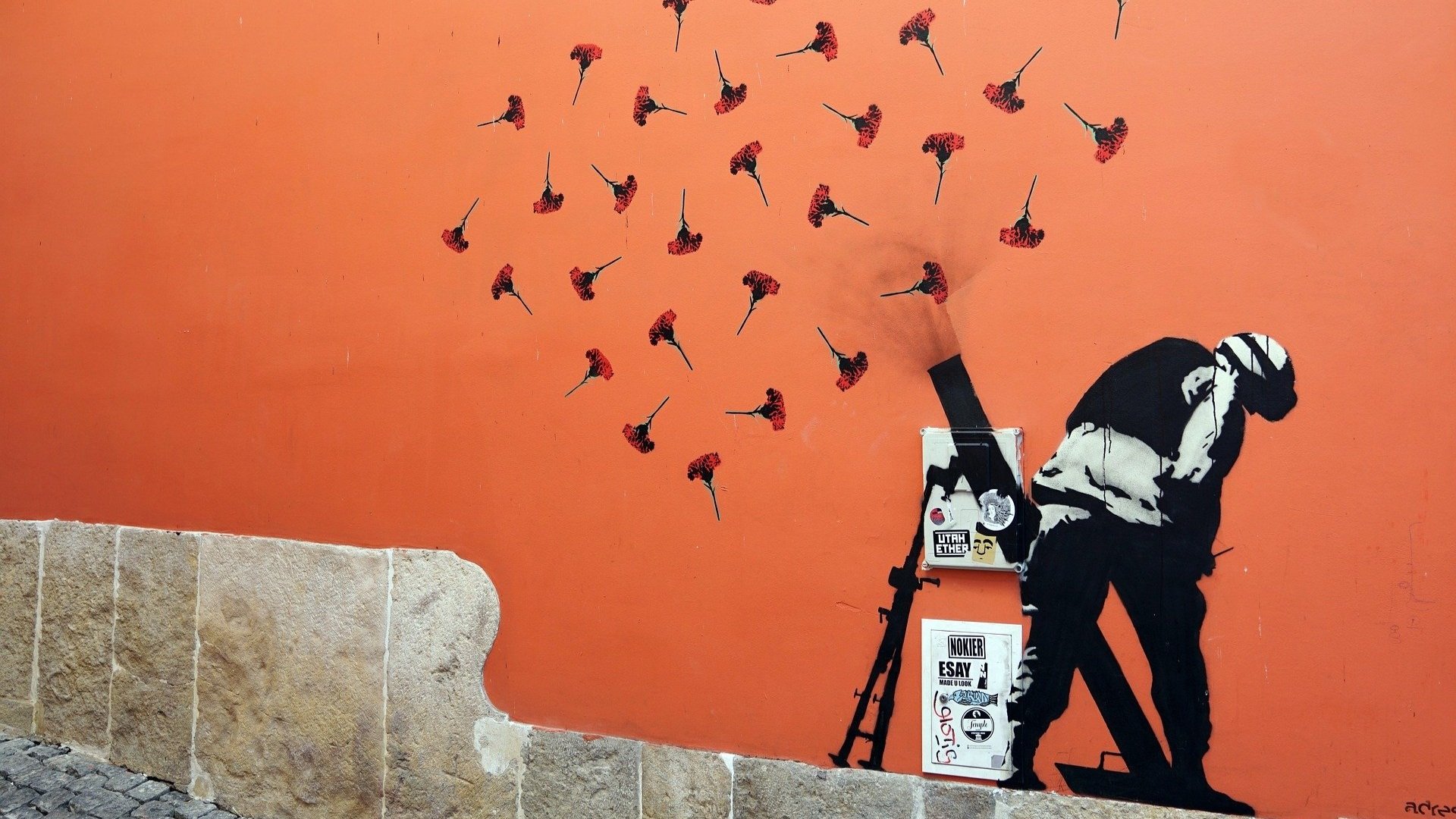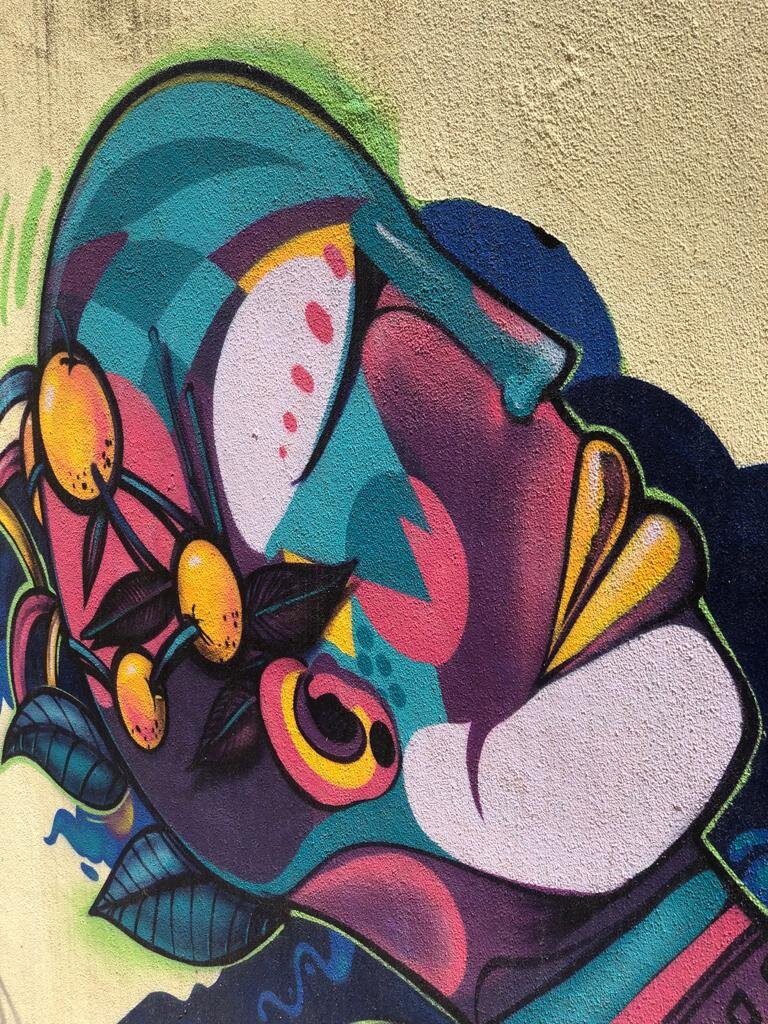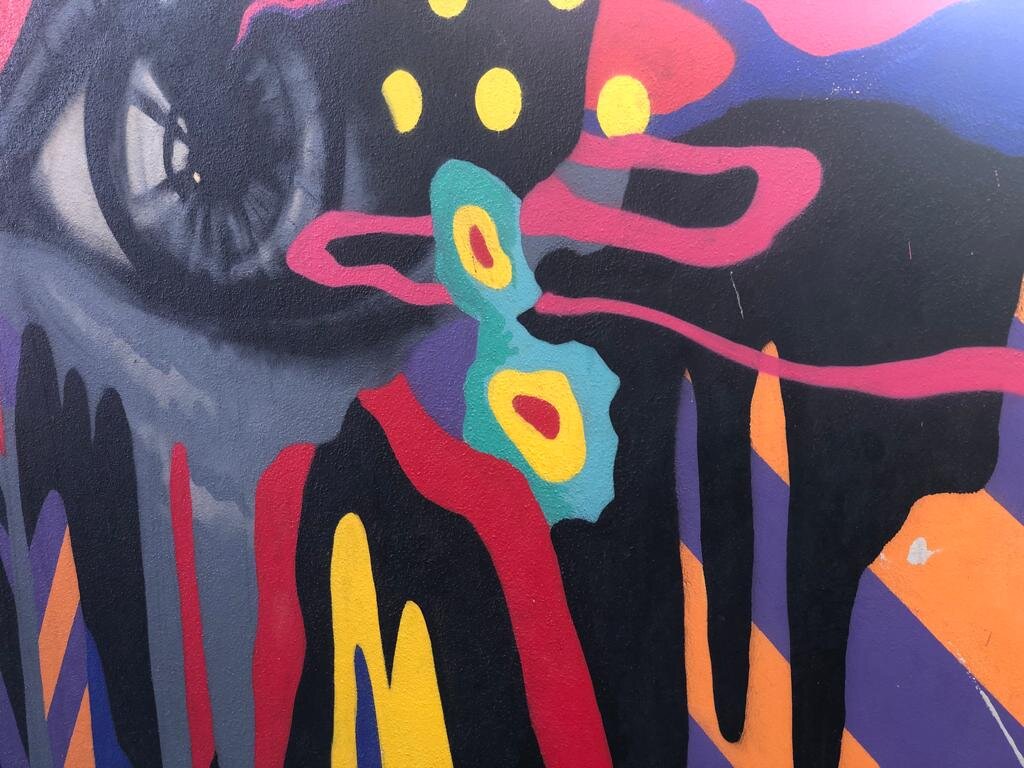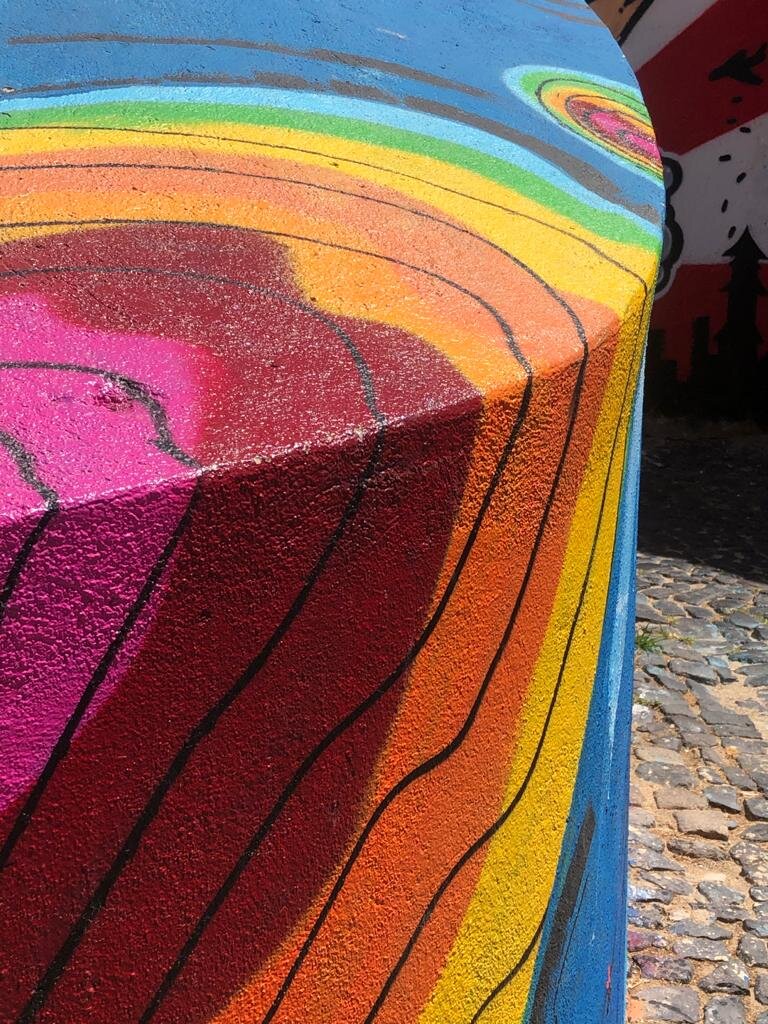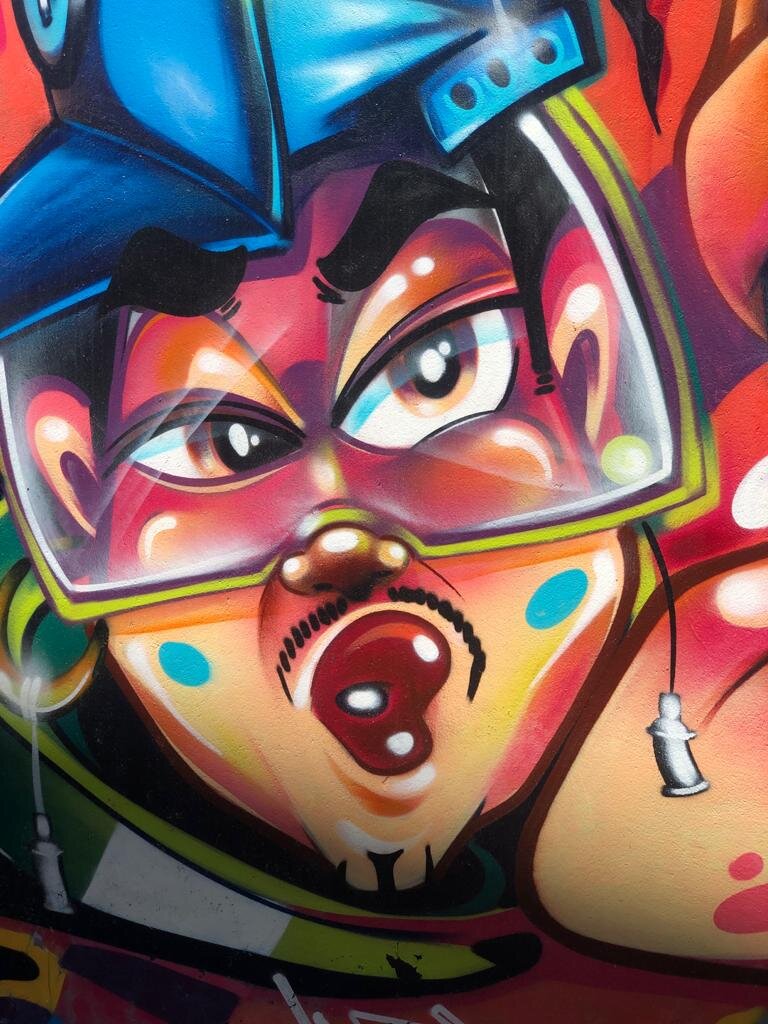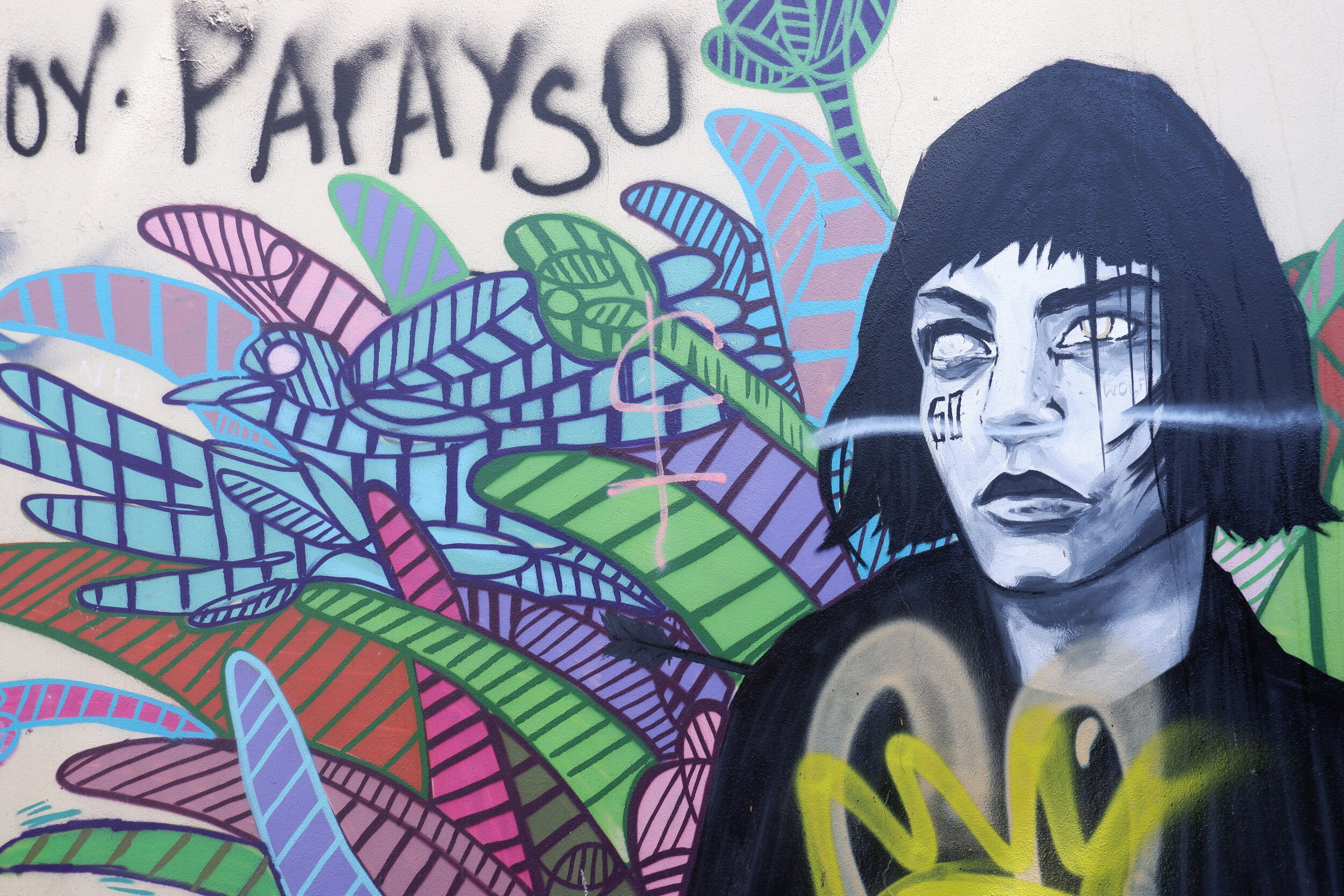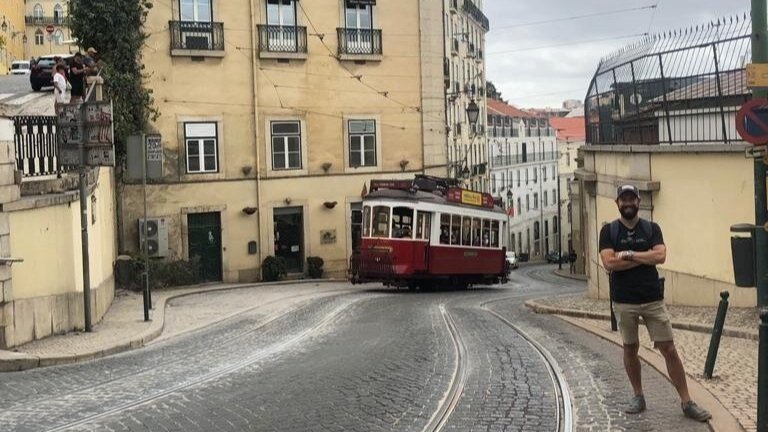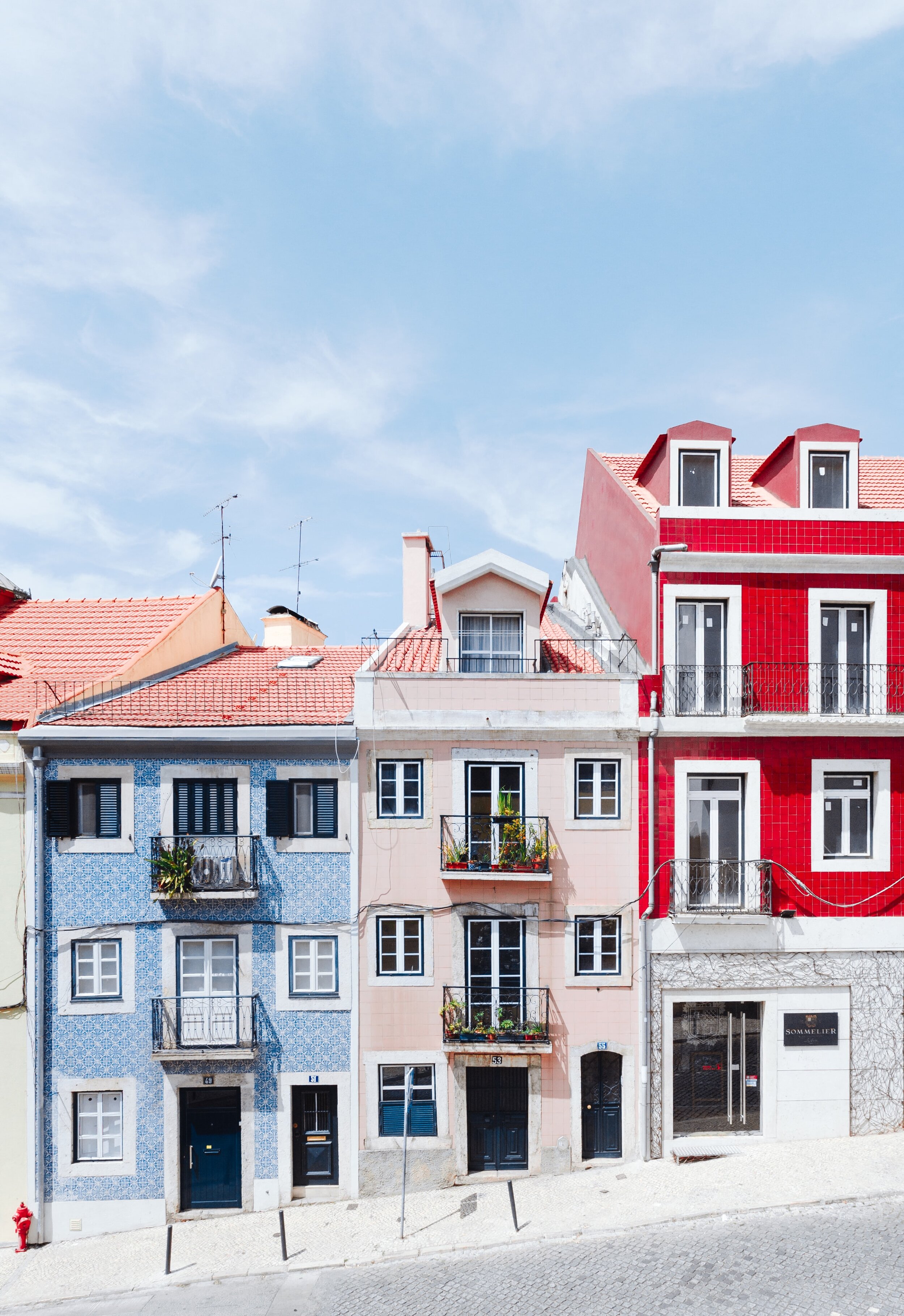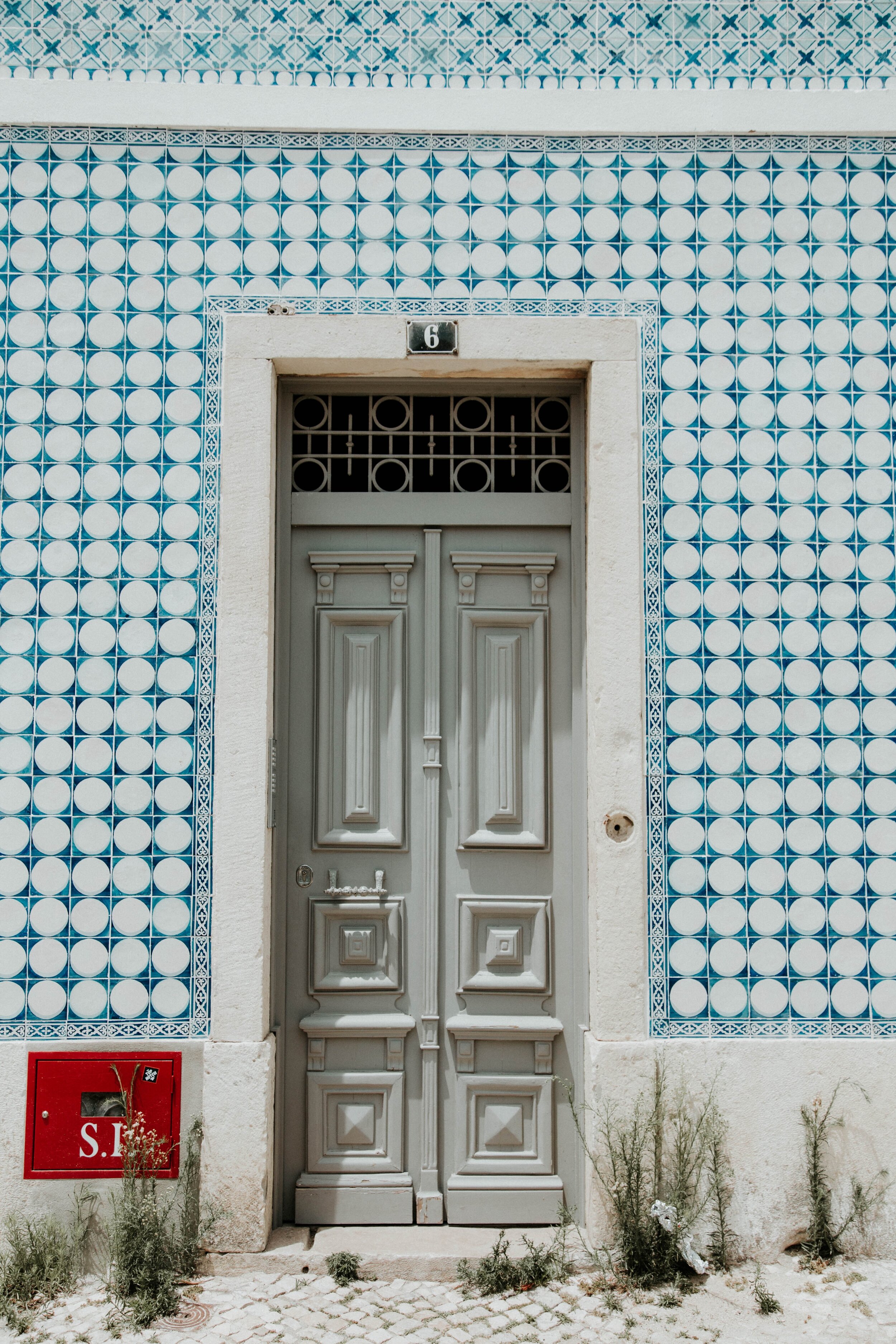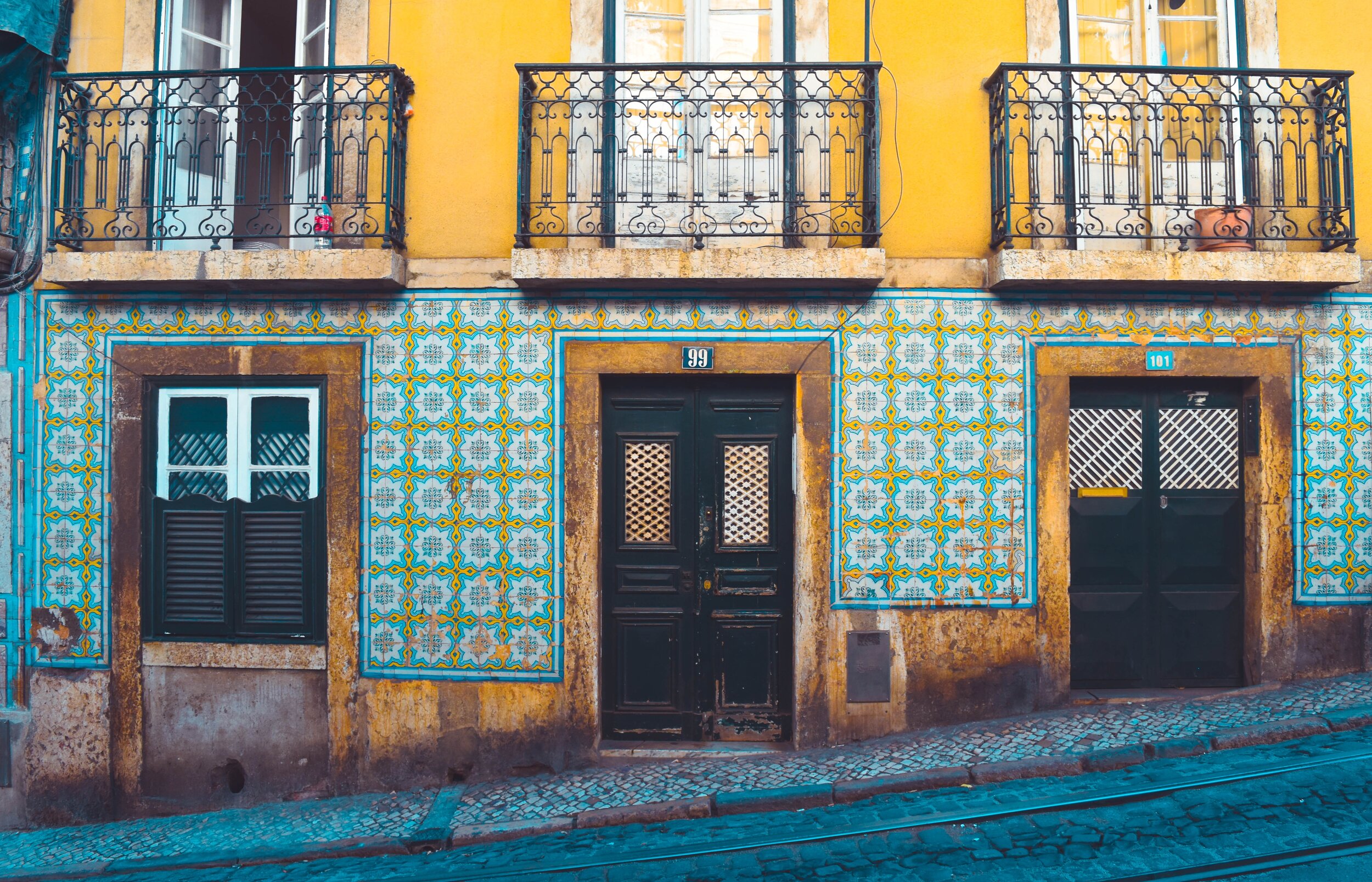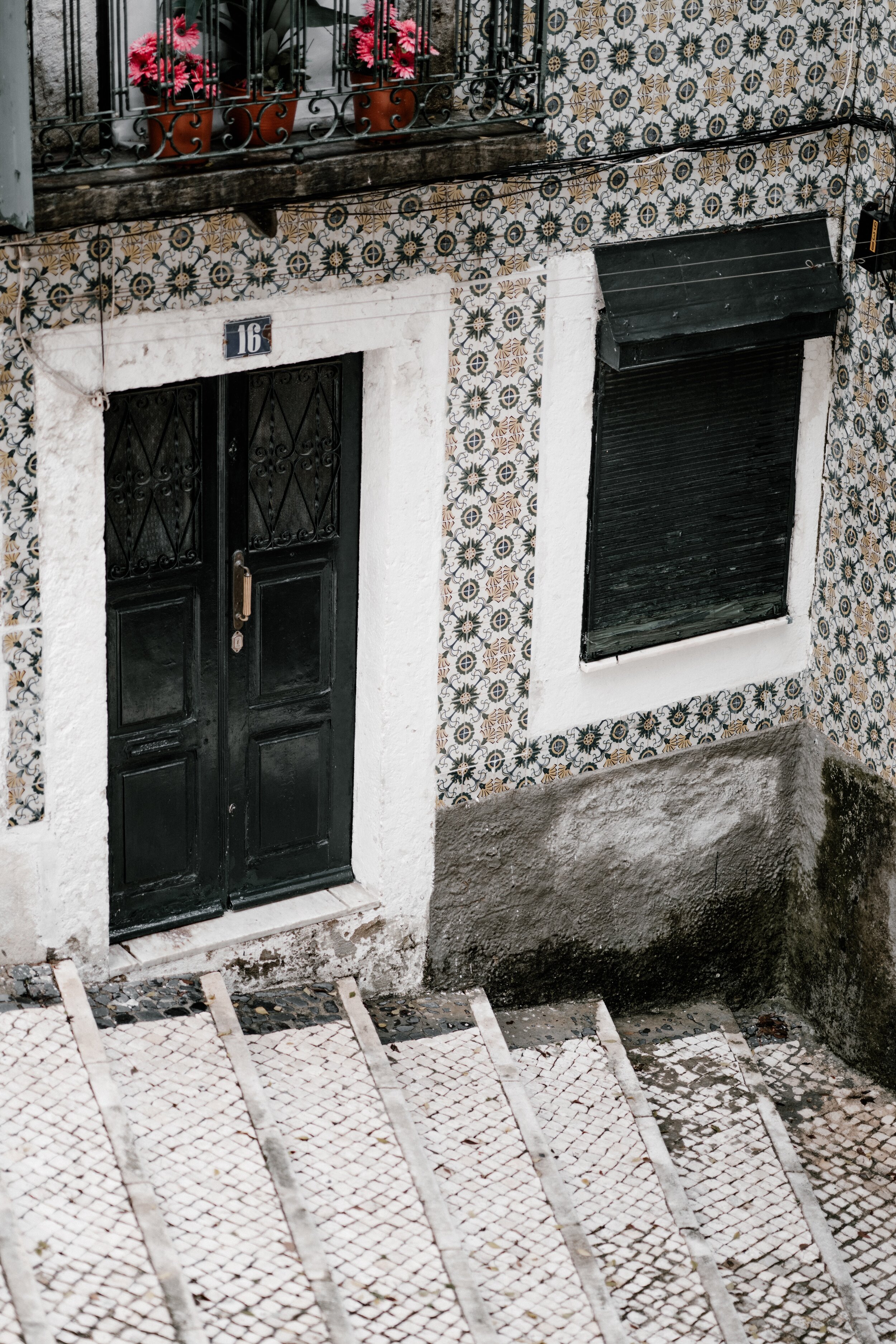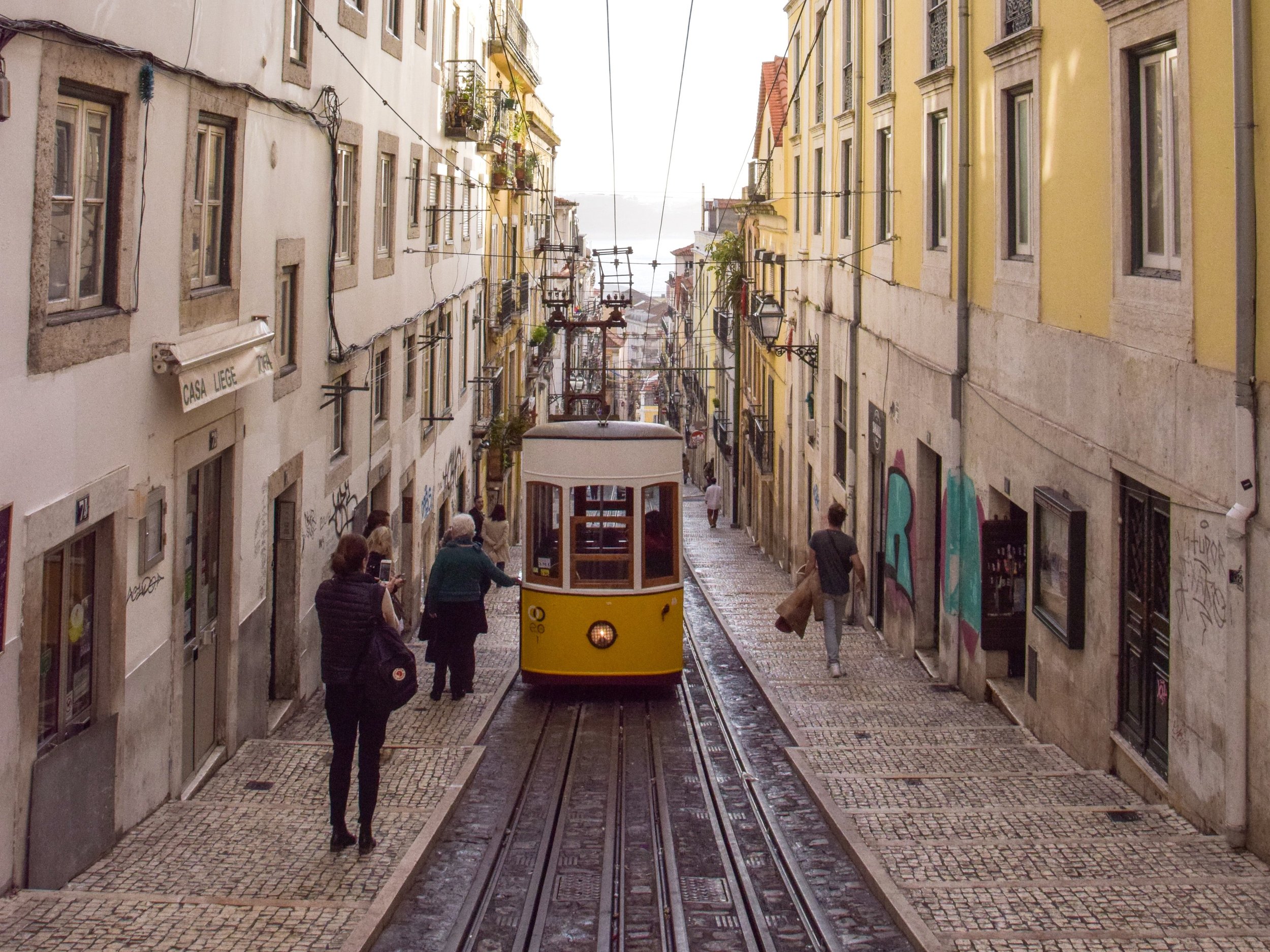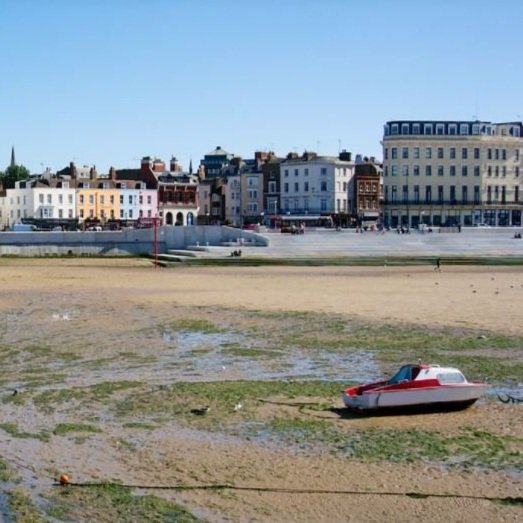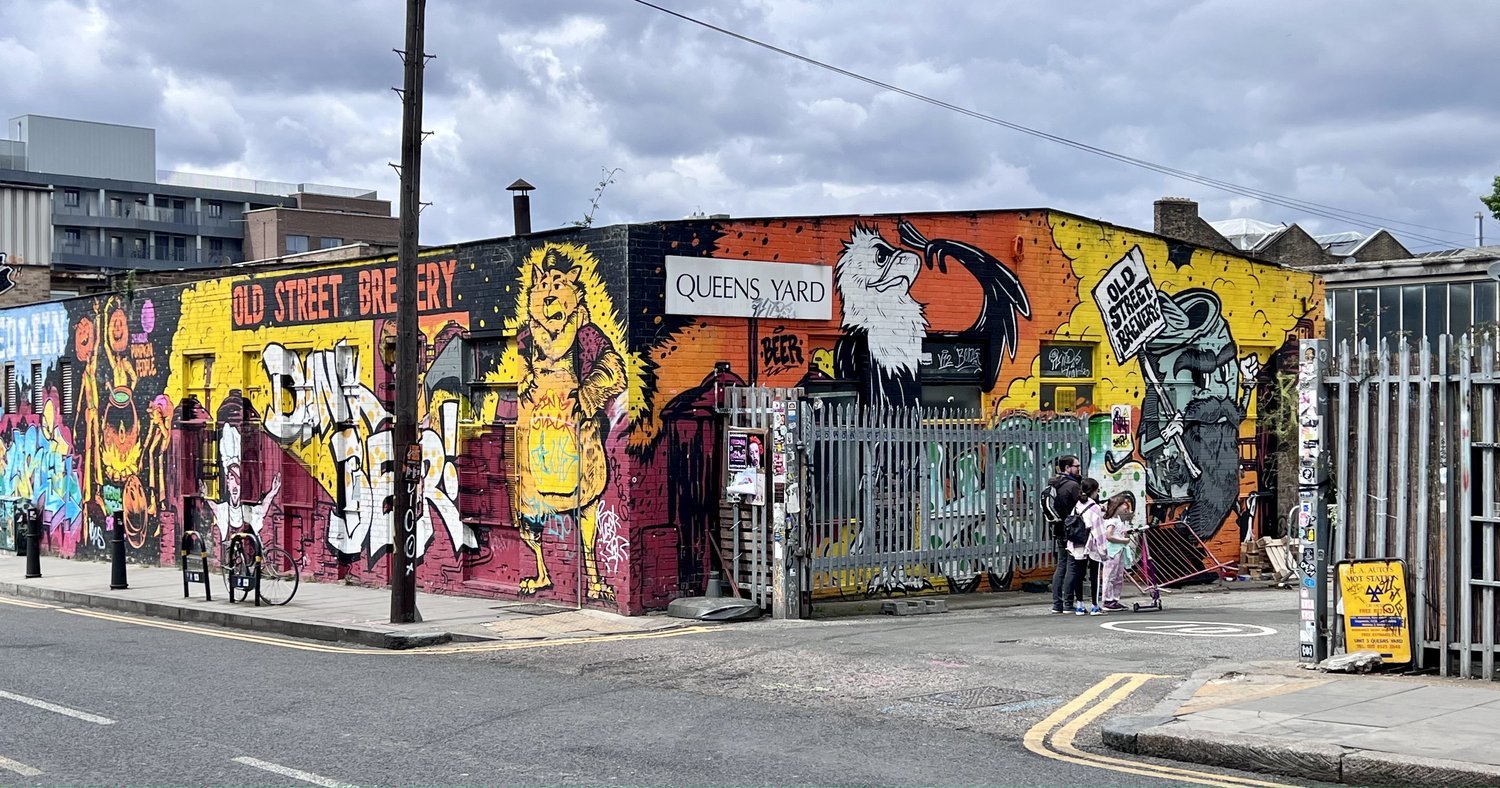Discover Street Art in Alfama District, Lisbon
Alfama District is one of the oldest neighbourhoods in Lisbon, Alfama and is steeped in history and culture.
Its narrow, winding streets and alleyways have a charm and character all their own, and they have also become a canvas for some of the most vibrant and exciting street art in the city.
With the abundance of street everywhere, Alfama District in Lisbon is an open-air gallery full of texture and colour, where its historic past seamlessly interacts with modern culture. Every street corner has something new to see, explore and experience. It is a feast for the visual senses for everyone from toddlers and children through to adults of all ages.
Alfama’s street art is constantly changing, as some stay up longer than others. This creates an ever evolving Lisbon streetscene that is visually stimulating.
Many of Lisbon’s historic buildings are covered in azulejos, a glazed blue ceramic tile, decorating the winding lanes and streets of the city. Like a rich tapestry or a mosaic, these historic buildings sit alongside Lisbon’s modern streets, murals, graffiti and sculptures that cover its building’s, walls and street corners.
In this blog, I will take you on a journey through Alfama District, exploring its colourful and dynamic street art scene.
I will also delve into the history of street art in Lisbon and how it became such an important part of the local community in Alfama. You will learn about the initiatives and organisations that promote street art in the area, and how it has helped to revitalise the neighbourhood.
For other other ideas on what to see and do in Lisbon, read here.
Table of Contents
History of Street Art in Alfama District
History of Street Art in Alfama District
Lisbon has a long and rich history of street art that dates back to the 1980s, when graffiti began to appear on the city's walls and buildings.
At the time, graffiti was seen as a form of vandalism and was largely dismissed by the public and the authorities. However, as the years went by, street art in Lisbon began to evolve and mature, and today it is recognised as a legitimate art form that contributes to the city's cultural landscape.
How street art became popular in Alfama District
Alfama is one of the oldest and most picturesque neighborhoods in Lisbon, known for its narrow streets, historic buildings, and traditional Fado music. It is also home to some of the city's most iconic street art pieces, which have helped to put Alfama on the map as a must-visit destination for street art enthusiasts.
The popularity of street art in Alfama can be traced back to the early 2000s, when a group of local artists began to use the walls of the neighborhood as a canvas for their work. These artists were inspired by the vibrant and eclectic nature of Alfama, which provided the perfect backdrop for their artistic expression.
Over time, the street art scene in Alfama began to grow and attract attention from both locals and tourists. Today, the neighborhood is home to a diverse range of street art styles and techniques, from large-scale murals to smaller, more intricate pieces.
The Importance of Street Art in Alfama District
How street art has influenced the local community in Alfama District
Street art in Alfama District has had a profound impact on the local community, providing a platform for artistic expression and cultural exchange. Through their work, street artists have been able to capture the essence of the neighbourhood and its people, reflecting their hopes, dreams, and struggles.
Street art has also helped to foster a sense of community in Alfama, bringing people together and creating a shared sense of pride and ownership over the neighborhood. It has become a part of the fabric of the community, with locals and visitors alike enjoying and engaging with the street art pieces on a daily basis.
How street art has helped to revitalize the Alfama area
In addition to its cultural and social significance, street art has also played a key role in the revitalisation of Alfama District.
Prior to the emergence of the street art scene, the neighborhood was struggling with issues such as neglect, urban decay, and depopulation.
However, street art has helped to transform the area, turning it into a vibrant and dynamic hub of artistic activity. The colourful and eye-catching murals and graffiti have breathed new life into the neighborhood, attracting visitors and tourists and boosting local businesses and tourism.
Furthermore, street art has helped to create jobs and opportunities for local artists and creatives, providing a much-needed boost to the local economy. Many street art initiatives in Alfama have also involved the community in the creation and curation of street art pieces, further enhancing their sense of ownership and investment in the neighborhood.
The local organisations and initiatives that promote street art in Alfama District
There are a number of local organizations and initiatives in Alfama District that are dedicated to promoting and supporting street art.
One such initiative is the MURO Urban Art Festival, which has been running since 2010 and has played a significant role in promoting street art in Alfama District. The festival features a diverse range of street art styles and techniques, including graffiti, murals, and stencil art, and has helped to raise the profile of the neighborhood as a hub of artistic activity.
There are also a number of street art tours and guides available in Alfama, which provide visitors with a comprehensive and informative overview of the street art scene in the area. These tours often feature local artists and experts, who offer insights into the history and significance of different street art pieces and styles.
Street Art in Alfama District
Street art can be found throughout Lisbon, including in the neighbourhoods of Baixa, Chiado and Bairro Alto. For sheer abundance and accessibility, our favourite neighbourhood to experience the delights of Lisbon’s street art, is the neighbourhood of Alfama.
Alfama is one of Lisbon's oldest districts and also one of it’s most rewarding. It is characterised by its narrow cobbled streets, steep flights of steps that wind up the hill from the Tejo Estuary to the Castelo de Sao Jorge. It is a fabulous place to spend a number of hours ‘getting lost’ in the maze of streets. The shapes, textures and colours create an inspirational place for photographers, artists and walkers alike who marvel at its charm and vibrancy.
The people of Alfama add to the sense of place and experience. The conversations between neighbours echo along the alleyways, whilst the clothes drying on lines and domestic paraphernalia, highlight that it is a living and breathing urban environment.
In amongst these narrow spaces, there are glimpses of views across the city, but it is not until one emerges from the labyrinth of lanes and streets at the top of the hill by the Castelo de Sao Jorge or Miradouro da Graça, the views of the city beneath open up.
These views are simply breathtaking !!
Alfama’s Street Art
We really love the abundance of street art you see along its narrow allyways. This art turns Alfama into a living open-air gallery that combines the old with the new. You can see some of our favourite art pieces below and we looking forward to seeing what new pieces emerge over time.
How to get to Alfama District
The two main and most engaging ways to reach Alfama are by tram or by walking. There are other options, such as by a taxi or car, but we really feel that you optimise your experience by travelling by tram and / or walking.
There are various walking routes in Alfama, linking it with the centre and the Tagus River. However, be warned that the streets and alleyways to the top of Alfama are very steep. For a more leisurely option, particularly for those with smaller children or anyone less mobile, we would suggest getting the No 28 tram to São Jorge Castle and then causally walking down to towards Rossio.
The historic and wooden No 28 tram is also one of the best ways to get around Lisbon generally and is a tourist attraction in its own right, and so does get busy. The tram links Alfama with São Jorge Castle with several of Lisbon’s neighbourhoods, including Bairro Alto, Baixa, and Chiado amongst others.
A potential walking route that takes in the areas street art and pace of life could include:
Our Favourite Street Artists
Lisbon is blessed with a number of great street artists, whilst its streets have also attracted a number of other great artists from across the world. This has led to a growing number of incredible murals. Some of our favourite street artists found in Lisbon include:
Tamara Alves is one of the more well known female street artists. Her work often involves the use of the female figure interacting with nature.
Vhils is a Portuguese artist who has created a strong visual interaction between his art and the urban environment. He is well known for his ability to expose layers of material, using a variety of techniques such as explosives, drilling and carving.
Bordalo II is from Lisbon, Portugal and is famous for using street garbage to create animals sculptures as a message to warn people of the dangers of pollution and effects of human activity upon the world’s habitats. Notable works include the Big Racoon trash animal and the ‘Plastic Fox’.
Os Gémeos translates as “THE TWINS”, Gustavo and Otavio Pandolfo. They come from Sao Paulo, Brazil and together have developed a unique artistic voice that is playful, drawing reference and inspiration from the streets. Their work encompasses the encounters and experiences that life offers.
Lisbon’s Tile Facades
Lisbon's streets exude colour at every turn. Its historic streets and narrow alleyways are characterised by beautiful azulejo tiles that form cladding on many buildings. These tiles, often blue and white in colour, can be found on the exterior of churches, palaces, houses, schools, restaurants and more recently the metro stations.
The azulejo tiles are an ornamental art form that adds to the tapestry of colour and texture within the streetscene and decorating the winding streets of Lisbon, forming a key part of the city’s identity.
The tiles also serve the functional purpose of maintaining and cooling internal room temperatures during the hot summer months.
The variety of patterns, shapes and pictures are awe inspiring. There are many examples throughout the city but here are just a few good examples.
16 interesting facts about Alfama District in Lisbon
Here are the 20 interesting facts about Alfama District in Lisbon:
Alfama is a historic district in Lisbon, dating back to the 8th century, and one of the oldest in the city.
Alfama District is famous for its narrow, winding streets and alleyways that provide shade and protection from the sun.
Alfama is home to a number of historic landmarks, including the Castelo de São Jorge and the Lisbon Cathedral.
Alfama District has a rich cultural heritage, with a strong influence from the Moors who ruled Lisbon for over 400 years.
Fado music, a traditional Portuguese genre, has its roots in Alfama and is still performed in many of the district's restaurants and bars.
Alfama is famous for its street art, with colorful and vibrant murals and graffiti adorning the walls of the district.
Alfama District is renowned for its traditional and authentic Portuguese restaurants serving local delicacies such as bacalhau (salt cod) and sardinhas (grilled sardines).
The Alfama market is a popular destination for foodies, offering a wide range of fresh produce and local products.
Alfama is known for its lively and festive atmosphere, with many street parties and celebrations throughout the year.
The Feira da Ladra flea market, held every Tuesday and Saturday, is one of the oldest and largest markets in Lisbon, offering a wide range of antiques and vintage goods.
Alfama is home to a number of traditional artisan workshops, such as pottery and tile-making studios.
Alfama District provides stunning views of the River Tagus, with many of its streets and alleys leading down to the riverfront.
Alfama is a great place to explore on foot, with many hidden gems and off-the-beaten-path attractions to discover.
Alfama is easily accessible by public transport, with several bus and tram lines connecting it to other parts of the city.
The district offers charming and cozy hotels and guesthouses, making it a great place to stay in Lisbon.
Alfama is an excellent base for exploring other parts of Lisbon, with easy access to neighborhoods such as Baixa, Chiado, and Bairro Alto.
For other other ideas on what to see and do in Lisbon, read here. If you’re heading to Lisbon anytime soon, I hope you love it as much as we do. If there is anything you think I should include in this blog post, you can email me at sarahransomeart@gmail.com.
